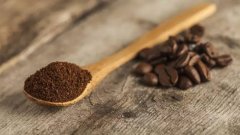What natural conditions are needed to grow coffee trees? which countries are the most suitable for planting coffee trees?
In the coffee processing process, baking is the most difficult step, it is a kind of science, but also a kind of art. The baking process is divided into three stages:
Dehydration, in the early stage of baking, raw beans begin to absorb heat, and the water inside gradually evaporates. At this time, the color gradually changed from cyan to yellow or light brown, the silver skin began to fall off, and the faint smell of grass could be smelled. The main function of this stage is to remove moisture, which accounts for about half of the baking time. Because water is a good conductor of heat transfer, it helps to bake the internal substance of coffee beans. Therefore, although the aim is to remove water, the baker will make good use of the temperature of the water and control it properly so that it will not evaporate too quickly.
Decompose at high temperature, bake to about 160 degrees, the water inside the beans will evaporate into gas, and begin to remove the outside of the coffee beans. At this time, the interior of the raw bean changed from endothermic to exothermic, and the first burst sound appeared. After the first burst, it turns to endothermic again, and the internal pressure of the coffee bean is extremely high, up to 25 atmospheric pressure. Heat and pressure begin to deconstruct the original tissue to form new compounds that create the taste and taste of coffee. When it reaches about 190 degrees, the conversion between endothermic and exothermic occurs again. Of course, high temperature cracking continues to occur, coffee beans from brown to dark brown, gradually into the stage of heavy roasting.
Cooling, coffee should be cooled immediately after roasting, quickly stop the high temperature cracking, and lock the flavor. Otherwise, the high temperature in the beans will continue to act and will burn off the aromatic substances. There are two cooling methods, one is air-cooled, the other is water-cooled. The air-cooled type is slow, but it is clean and does not pollute, and it can retain the mellow flavor of coffee, so it is used for fine coffee. Water-cooled coffee beans are sprayed with a layer of water mist on the surface of coffee beans, causing the temperature to drop rapidly, requiring precise calculation, and increasing the weight of roasted coffee beans, generally used in commercial coffee roasting.
Burst sound, raw beans from endothermic to exothermic, the internal substances out of the body, will form an obvious sound. The first time is louder, crisp and scattered, and the second is quiet, meticulous and concentrated. Because of the high correlation between bursting sound and temperature, it can fully represent the temperature of baking, which is an important basis for bakers to judge the baking degree.

Important Notice :
前街咖啡 FrontStreet Coffee has moved to new addredd:
FrontStreet Coffee Address: 315,Donghua East Road,GuangZhou
Tel:020 38364473
- Prev

Roasting cup shallow roasted coffee sweet and sour sweet sweet fruit aroma overflowing with coffee beans in the producing area
Bake, cup test, bake, cup test! After continuous adjustment and taste of different coffee curve roasted coffee, so that the taste of coffee to achieve better! Use your senses: eyes, nose, ears, and mouth to learn more about the characteristics of coffee. Master the perfect baking curve. Coffee always gives people a black and bitter stereotype, but in fact, it is just like a fruit.
- Next

Distinguish the degree of roasting coffee beans surface wrinkles how deep baking surface smooth shallow roasting concept cafe
After knowing the roasting principle of coffee beans, it is easy to distinguish the degree of roasting, which can be judged by the following: appearance: shallow baking-wrinkled surface, deep baking-smooth surface. Color: light baking-light color, deep baking-dark color. Taste: shallow baking-sweet and sour, deep baking-bitter fragrance. Preservation: shallow baking-slow oil production speed, deep baking-oil production speed
Related
- Beginners will see the "Coffee pull flower" guide!
- What is the difference between ice blog purified milk and ordinary milk coffee?
- Why is the Philippines the largest producer of crops in Liberia?
- For coffee extraction, should the fine powder be retained?
- How does extracted espresso fill pressed powder? How much strength does it take to press the powder?
- How to make jasmine cold extract coffee? Is the jasmine + latte good?
- Will this little toy really make the coffee taste better? How does Lily Drip affect coffee extraction?
- Will the action of slapping the filter cup also affect coffee extraction?
- What's the difference between powder-to-water ratio and powder-to-liquid ratio?
- What is the Ethiopian local species? What does it have to do with Heirloom native species?

